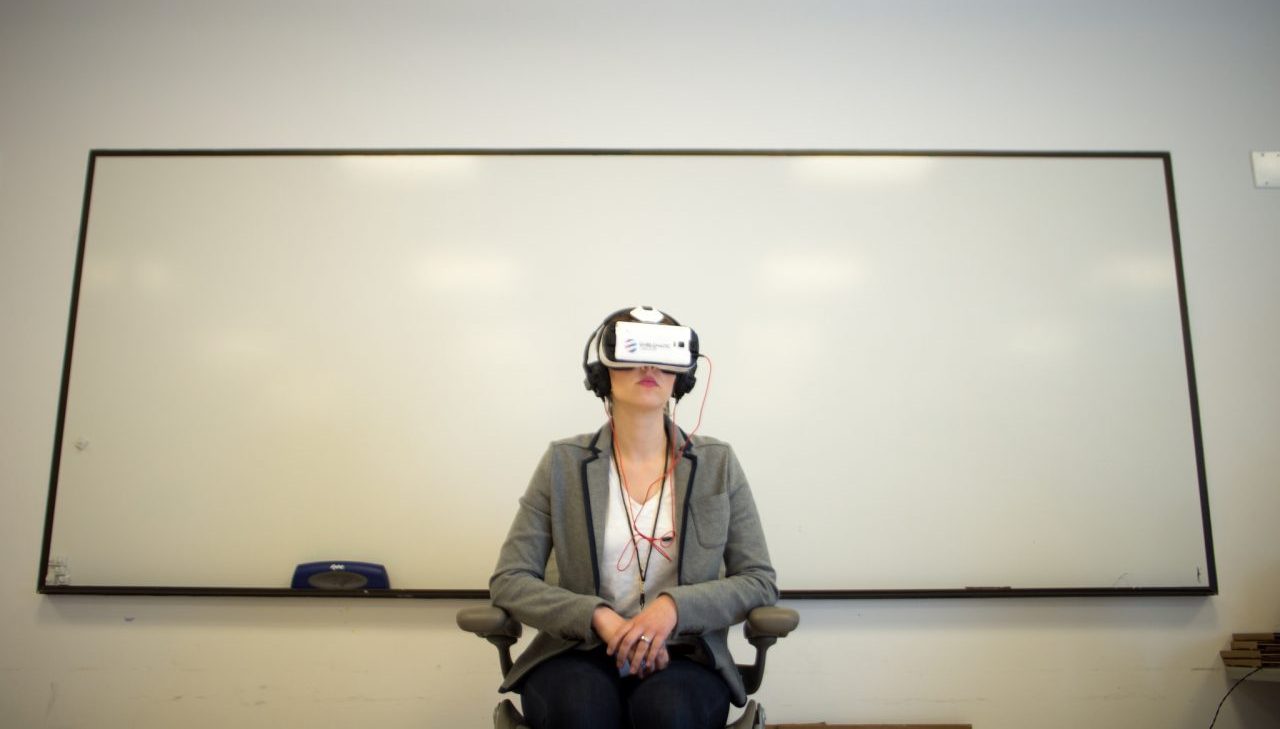VR was everywhere at the Tribeca FilmFest, where the standouts were animation productions, not video. Expect more, not necessarily better, as headsets spread.
“This is going to be the year of a lot of bad VR,” predicted the New York Times’ Sam Dolnick. The reason? Headsets just went on sale, and media productions are rushing onto different platforms to make it worth your while to buy one. But there’s also going to be some good stuff.
It’s still a time of great experiment. After all, the basic grammar of this immersive form is still being worked out, as a recent Documentary article points out. But makers were drawing on experience in sharing tips at the festival.
1. Make it a destination experience–one they’d like to return to. The New York Times, which is making a well-publicized landgrab for journalistic VR, announced its launch of Seeking Pluto’s Frigid Heart, its simulation of the surface of Pluto, using NASA data. The available clips looked impressively returnable-to.
2. Think of yourself as a tour guide to the experience, more than the storyteller. Storytelling is still a headscratcher of a problem in VR, while taking people on a journey is much simpler conceptually. As Jessica Brilhart, Google’s head VR filmmaker, said, “Don’t try to force your viewer to go anywhere; reward them for doing so.” Jake Silverstein, editor of the NYT magazine, said, “Story isn’t the center of VR.”
3. Pay attention to the sound, and use the capacity of the medium for directional sound. Musicians and sound designers were all over Tribeca’s VR showcases, because sound has been recognized as central to the experience, especially directional sound that enhances the illusion of presence and that creates more specificity. One of the featured VR pieces was a father-daughter story told in music, inside a car (and produced by Pearl Google’s Spotlight Stories),
4. Virtual reality can be alarmingly effective. Although real-life VR video—a Palestinian mother’s story of loss, a heartwarming story about African entrepreneurship—generally underwhelmed me (and made me feel guilty for being underwhelmed), in one case social-issue VR video really worked for me. 6X9, produced for The Guardian newspaper, puts you inside a solitary prison cell for only a few minutes, just long enough to make you really glad you can leave. In the process, it creates a variety of short messages on the surrounding walls, as well as fantasy wall patterns and ghosting meant to emulate hallucinations engendered by extended solitary time. The combination of experience and information is intensely affecting, without being overwhelming. An Australian VR experience, Collisions, combined video and animation to recreate a real-life 1950s atomic bomb blast from the viewpoint of and within the physical environment of an aboriginal elder. It was a remarkable point-of-view experience, giving viewers a chance to imagine not only the event but the elder’s relationship to the land before and after it.
5. Video is several kinds of a challenge. Video carries with it implicit linear storytelling, as it records in real time. It requires gigantic amounts of digital space. Any distortion sets off alarm bells in the viewer’s brain. (360-degree video is a lot easier to do than VR, though.) “Animation and VR are made for each other,” said Maureen Fan of Baobab Studios (they made the short animated VR experience Invasion!).
6. Less can be more. One of the most minimal VR experiences was the exquisitely designed Sens, built upon a graphic novel that is equally minimal. In both, a trench-coated man (you will sometimes become this figure in the VR) explores a world where a white landscape is occasionally interrupted by black arrows — follow them — which lead to buildings, ruins, a beach, and eventually, in Chapter 1, to a magic carpet ride. The experience plunges you into a world of indistinct and perhaps unknowable meaning, and gives you a wondrous experience of discovery unattached to goals.
7. More can also be more. One of the most satisfying VR experiences was the elegant, well-designed game Land’s End, from the same people who brought us Monument Valley. It shares some of the same characteristics—delight in discovery and arrival, solveable mysteries, beautiful, improbable magical landscapes. Deep VR, a scuba-like trip through an imaginary cave with experience synched with breathing rate, was so hypnotically entrancing that I whimpered when they tapped me on the shoulder to signal the end of my time with the experience. The music was key to the enchantment. Allumette, a grim look at an alternative future in which the Little Match Girl lives and dies again, allows viewers to poke around in the adorable, elaborately constructed town in the sky, which provides her no social safety net.
8. Be prepared to make your work for several platforms and constantly changing equipment. Cardboard, Oculus, Vive, mobile and the web all require different versions. Rigs change daily, it seems. While we wait for the field to shake out, resign yourself to a lot of adapting.

Google cardboard. Photo by Maurizio Pesce on Flickr and used here with Creative Commons license.
9. Respect the current limits of the technology. Today’s VR allows for limited movement, and movement in virtual reality can cause enough cognitive dissonance to make you nauseated. So you want to avoid “PPSs” (potential puke shots).
10. Expect glitches. A lot. Many of the demos at Tribeca suffered from tech meltdowns, which drove everyone crazy and made long lines to use the equipment even longer.
 This post originally appeared on the the site for the Center for Media & Social Impact, School of Communication, American University.
This post originally appeared on the the site for the Center for Media & Social Impact, School of Communication, American University.
Patricia Aufderheide is University Professor and Director of the Center for Media & Social Impact, School of Communication, American University, and co-author with Peter Jaszi of “Reclaiming Fair Use: How to Put Balance Back in Copyright” (University of Chicago Press). You can give feedback at [email protected].


